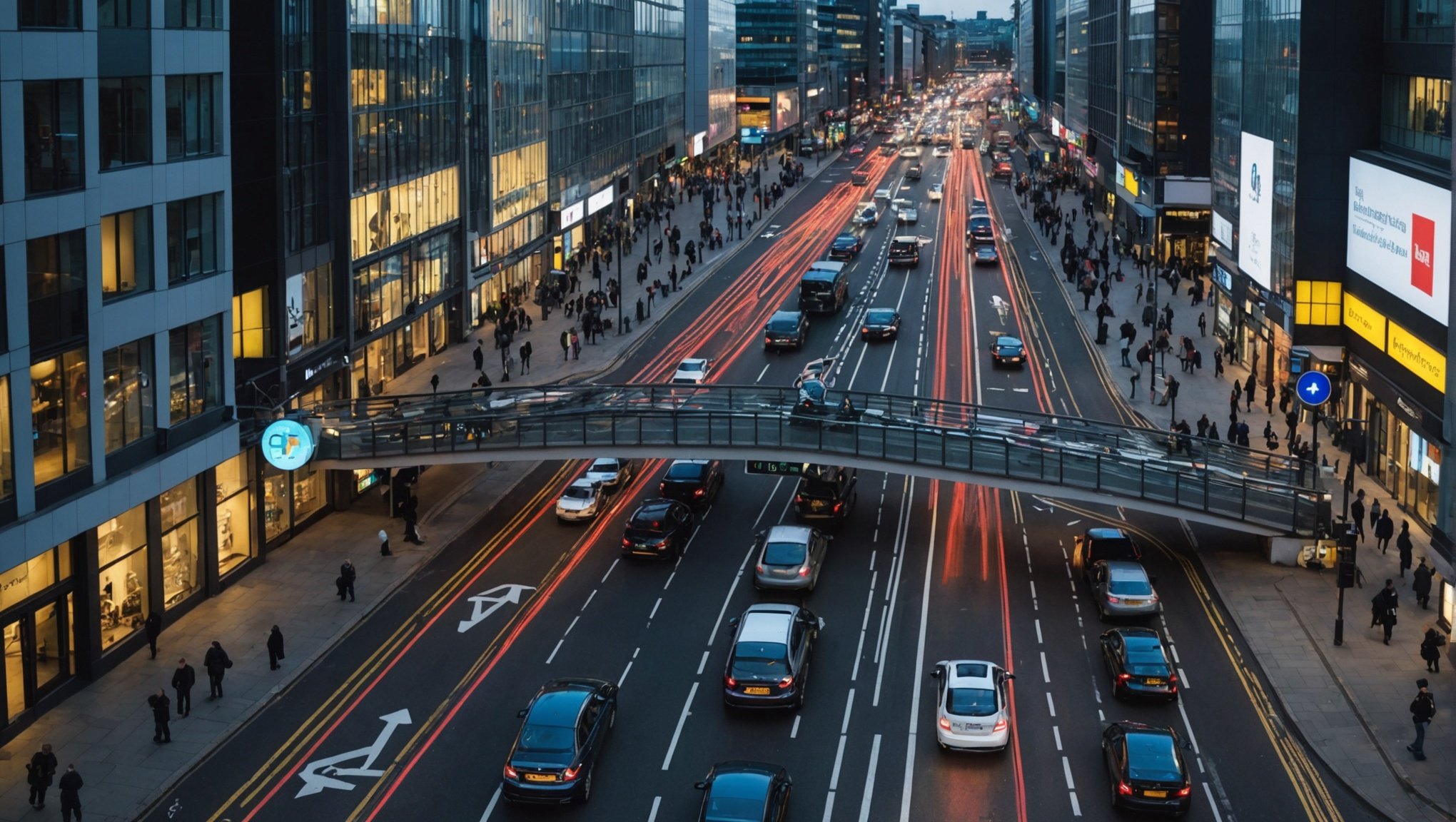Urban mobility is at a turning point as AI transforms how cities manage traffic flow. Smart technologies enable real-time data analysis and adaptive traffic signals, reducing congestion and improving commuter experiences. In the UK, innovative solutions are emerging, making public transport safer and more efficient. This integration not only enhances environmental sustainability but also paves the way for smarter, more connected urban spaces. Explore how these advancements are reshaping mobility and creating a more responsive urban landscape.
Overview of Urban Mobility Challenges
Urban mobility challenges are a significant concern for cities across the UK. Traffic congestion remains one of the most pressing issues, impacting both the environment and society. As vehicles crowd the streets, emissions increase, contributing to air pollution and climate change. This congestion also leads to lost time and productivity, affecting the quality of life for city dwellers.
Also to discover : What Are the Legal Challenges Faced by UK Companies Adopting Blockchain Technology?
In the context of smart cities, addressing these challenges is crucial. Smart cities aim to integrate technology to improve urban living, and efficient mobility is a core component. By leveraging data and innovative solutions, cities can reduce traffic congestion and its associated impacts. For instance, real-time traffic management systems can optimise traffic flow and reduce delays.
The importance of tackling urban mobility challenges extends to future city planning. As urban populations grow, the demand for efficient and sustainable transport solutions will increase. Planning for this now ensures that cities remain livable and environmentally friendly. Emphasising public transport, cycling, and walking can help alleviate congestion and promote a healthier urban environment.
In parallel : Eco-Friendly Innovations: Strategies for UK Tech Firms to Reduce Environmental Impact in Hardware Manufacturing
Overall, understanding and addressing urban mobility challenges is essential for creating resilient and sustainable cities.
AI Technologies in Traffic Management
In the quest to alleviate traffic congestion, AI technologies have emerged as pivotal tools. These technologies use machine learning to analyse vast amounts of data, identifying patterns and predicting future traffic scenarios. By doing so, cities can anticipate congestion and implement measures to mitigate it.
Role of Machine Learning in Predicting Traffic Patterns
Machine learning algorithms process real-time data from various sources, such as GPS and traffic cameras. These algorithms learn from historical data to predict traffic flow and potential bottlenecks. This predictive capability allows for proactive traffic management, reducing delays and enhancing the efficiency of urban mobility systems.
Benefits of Predictive Analytics for Traffic Flow Management
Predictive analytics is instrumental in optimising traffic flow. By forecasting traffic conditions, city planners can design better infrastructure and improve public transport schedules. This not only eases congestion but also supports the development of sustainable urban environments. Moreover, predictive analytics helps in emergency response planning, ensuring swift action during traffic incidents.
Overall, the integration of AI in traffic management is a game-changer. By leveraging machine learning and predictive analytics, cities can transform their mobility systems, making them more efficient and responsive to the needs of their residents.
Case Studies of AI Implementation in UK Cities
Exploring how AI technologies are being applied in urban settings provides valuable insights into their effectiveness. Here are some notable AI case studies in UK cities, showcasing smart city examples and traffic flow improvements.
London: Smart Traffic Signals
In London, smart traffic signals have revolutionised traffic management. These signals use AI to adapt to real-time traffic conditions, optimising the flow of vehicles and reducing congestion. By analysing data from sensors and cameras, they adjust signal timings dynamically, leading to significant improvements in traffic flow metrics. This initiative demonstrates how AI can enhance urban mobility, making London a prime example of a smart city.
Manchester: Integrated Transportation Systems
Manchester has implemented AI-driven integrated transportation systems, streamlining various modes of transport. By coordinating buses, trams, and bicycles, the city has improved connectivity and reduced travel times. This system uses AI to predict demand and allocate resources efficiently, showcasing a successful AI traffic initiative. The outcome is a more cohesive and efficient urban transport network.
Bristol: AI in Public Transport Optimisation
Bristol has leveraged AI to optimise public transport schedules, focusing on reducing delays and enhancing service reliability. By analysing passenger data and traffic patterns, AI systems adjust routes and timings, resulting in improved traffic flow metrics. This approach highlights the potential of AI in transforming public transport systems, offering valuable lessons for other cities.
Comparing Traditional vs. AI-Driven Traffic Systems
In the realm of traffic management, the shift from traditional systems to AI-driven solutions marks a significant evolution. Traditional traffic management often relies on static signals and predetermined schedules, which can struggle to adapt to real-time conditions. In contrast, AI-driven systems utilise real-time data and machine learning to dynamically adjust traffic signals and optimise flow.
Key Differences and Efficiency
The primary difference lies in adaptability. Traditional systems are less responsive, often leading to inefficiencies during unexpected congestion. AI-driven systems, however, continuously analyse traffic patterns, allowing for immediate adjustments that enhance the overall flow and reduce delays. This adaptability results in a more efficient and effective traffic management approach.
Cost Implications
Transitioning to AI technologies involves initial costs, including infrastructure upgrades and system integration. However, the long-term benefits, such as reduced congestion and improved traffic flow, can offset these expenses. Cities investing in AI-driven traffic management often experience lower operational costs due to decreased fuel consumption and less wear on infrastructure, highlighting the economic advantages of embracing AI solutions.
Future Trends in Smart City Planning
The future of smart cities is being shaped by rapid advancements in technology, particularly in the realm of urban mobility trends. As cities evolve, they are increasingly integrating AI to enhance traffic management and improve the quality of urban life. This shift is driven by the need for more efficient and sustainable transport solutions.
AI advancements are expected to play a pivotal role in future traffic management. These technologies will enable more sophisticated data analysis, allowing cities to predict and respond to traffic conditions with greater precision. As AI systems become more advanced, they will facilitate the development of autonomous vehicles and smart infrastructure, transforming urban mobility landscapes.
However, implementing these innovations presents challenges. Cities must consider the cost of upgrading infrastructure and the need for robust data security measures. Additionally, there is a need for public acceptance and adaptation to new technologies, which requires careful planning and communication.
In summary, the future of smart cities hinges on the successful integration of AI advancements in urban mobility. By addressing these challenges, cities can harness the potential of AI to create more efficient, sustainable, and livable urban environments.











